

How to Cross-Sell on Shopify in 2025? (3 Easy Ways)
Shopify cross-sell is a smart way to increase sales by showing customers related or add-on products. It helps shoppers...
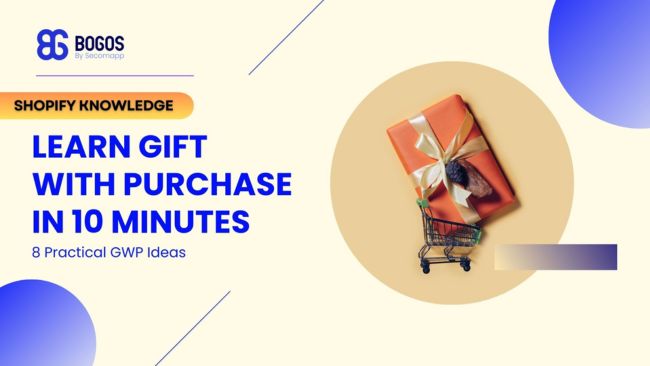
Digital Marketing Specialist
Gift with purchase promotions, also known as GWP, have become a powerful marketing tool for businesses looking to boost sales and foster customer loyalty. By offering customers a complimentary item when they make a qualifying purchase, companies can create a more engaging and rewarding shopping experience. This article will delve into the concept of free gift with purchase, explore its significance in modern retail, and provide insights on how to effectively implement GWP strategies to drive business success.
Gift with Purchase, or GWP, is a promotional marketing strategy where customers receive a free gift when they make a purchase that meets certain criteria, such as a minimum spend amount or the purchase of specific products. The free gift is typically a sample, a full-sized product, or branded merchandise that complements the customer’s purchase.
For example, a cosmetics brand might offer a free makeup pouch with a minimum purchase of $50, or a tech company could provide a complimentary pair of earbuds with the purchase of a smartphone. The free gift adds perceived value to the customer’s shopping experience and can incentivize them to make a purchase or spend more than they initially intended.
In today’s competitive retail landscape, businesses are constantly seeking ways to differentiate themselves and attract customers. Gift with purchase promotions have proven to be an effective strategy for several reasons:
By leveraging the power of Gift with purchase promotions, businesses can create a win-win situation where customers feel rewarded, and the company benefits from increased sales and customer loyalty.
Gift with purchase promotions can be structured in various ways to suit different business goals and target audiences. Some common mechanics include:
Shopify is a leading e-commerce platform that makes implementing gift-with-purchase promotions straightforward for online retailers. These incentives have proven to significantly improve e-commerce store conversion rates by reducing cart abandonment and increasing average order value. For merchants looking to create free gift with purchase promotions on their Shopify store, a comprehensive guide is available at: How to Add Free Gift With Purchase on Shopify? [2025]
Additionally, using an Upsell app for Shopify can further optimize these promotions by suggesting relevant products alongside the free gift, helping to increase overall order value.
Branded merchandise refers to products that feature a company’s logo, slogan, or other branding elements. These items can range from practical everyday objects like t-shirts, mugs, and tote bags to more unique and memorable items like branded Bluetooth speakers or custom-designed accessories.
Branded merchandise works well for companies with strong brand recognition and loyal customer bases. By offering branded items as complimentary gifts, these companies can leverage their brand equity to create a stronger emotional connection with customers and increase brand visibility through the use of the gifted products.
Pros:
Cons:
Case Study: Coca-Cola’s Share a Coke Campaign
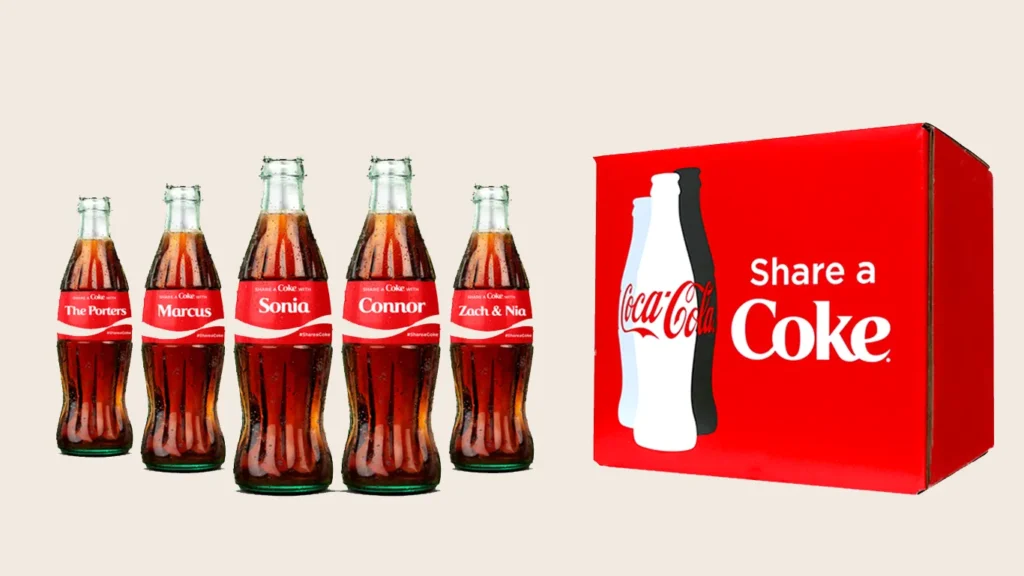

Coca-Cola’s “Share a Coke” campaign is a prime example of successful branded merchandise. The company replaced its iconic logo on Coke bottles with popular names and phrases, encouraging customers to find and share bottles with names that held personal meaning.
Sample-sized products are miniature versions of a company’s full-sized offerings, designed to give customers a taste of the product without requiring a full purchase. These samples can be particularly effective for companies introducing new products or looking to encourage customers to try items they may not have considered before.
Sample-sized products work well for a wide range of industries, including beauty and skincare, food and beverage, and household goods. They are particularly useful for products that customers may be hesitant to commit to without trying first, such as new flavors, scents, or formulas.
Pros:
Cons:
Case Study: Sephora’s Beauty Insider Birthday Gift
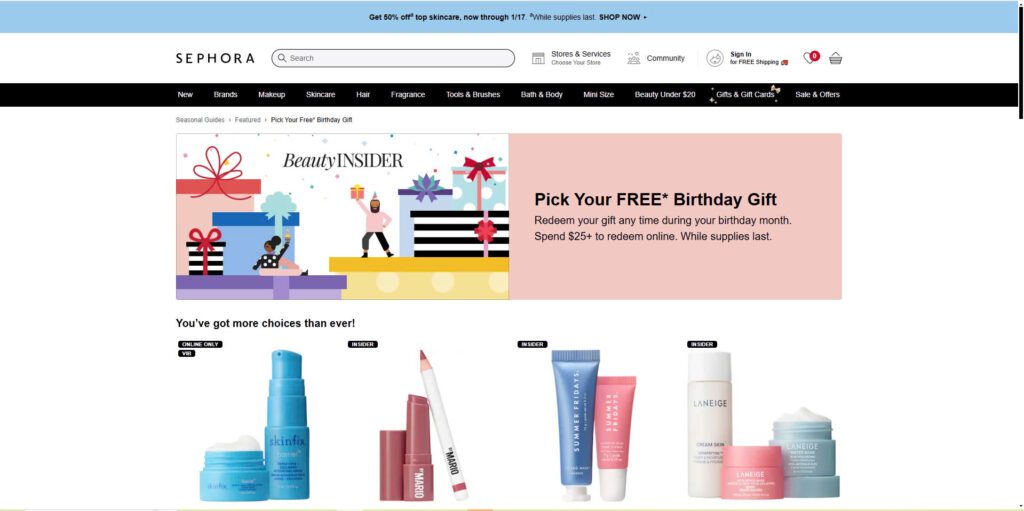

Sephora, a leading beauty retailer, offers a complimentary birthday gift to its Beauty Insider loyalty program members. These gifts often include sample-sized products from popular brands, giving customers the opportunity to try new items they may not have purchased otherwise.
Gamification involves incorporating game-like elements, such as puzzles, challenges, or rewards, into a GWP promotion. By adding an interactive, engaging element to the gifting process, companies can create a more memorable and enjoyable experience for customers.
Gamification works well for companies targeting younger, tech-savvy audiences who value interactive experiences. It can also be effective for brands looking to stand out in crowded markets or to create a stronger emotional connection with customers.
Pros:
Cons:
Case Study: McDonald’s Monopoly Game
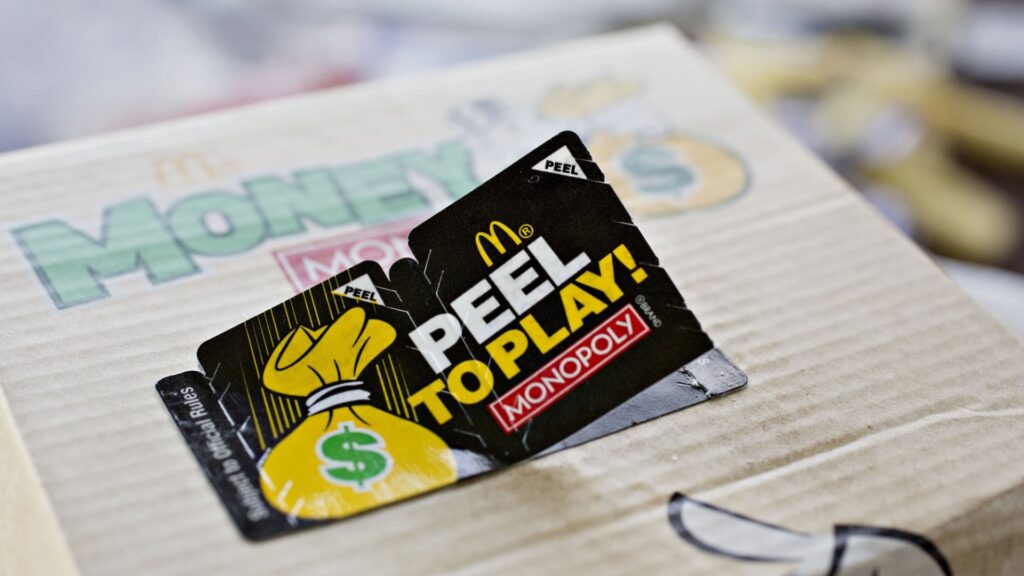

McDonald’s Monopoly is a classic example of a successful gamification-based GWP promotion. Customers collect game pieces with their purchases, which can be redeemed for prizes ranging from free menu items to luxury vacations and cash rewards.
Experiential gifts focus on providing customers with a unique, memorable experience rather than a physical product. These gifts can include things like exclusive access to events, travel vouchers, or personalized services.
Experiential gifts work well for luxury brands or companies selling high-end products, as they align with the premium, aspirational nature of these offerings. They can also be effective for brands looking to differentiate themselves in markets saturated with physical gift options.
Pros:
Cons:
Case Study: Neiman Marcus’s Fantasy Gifts
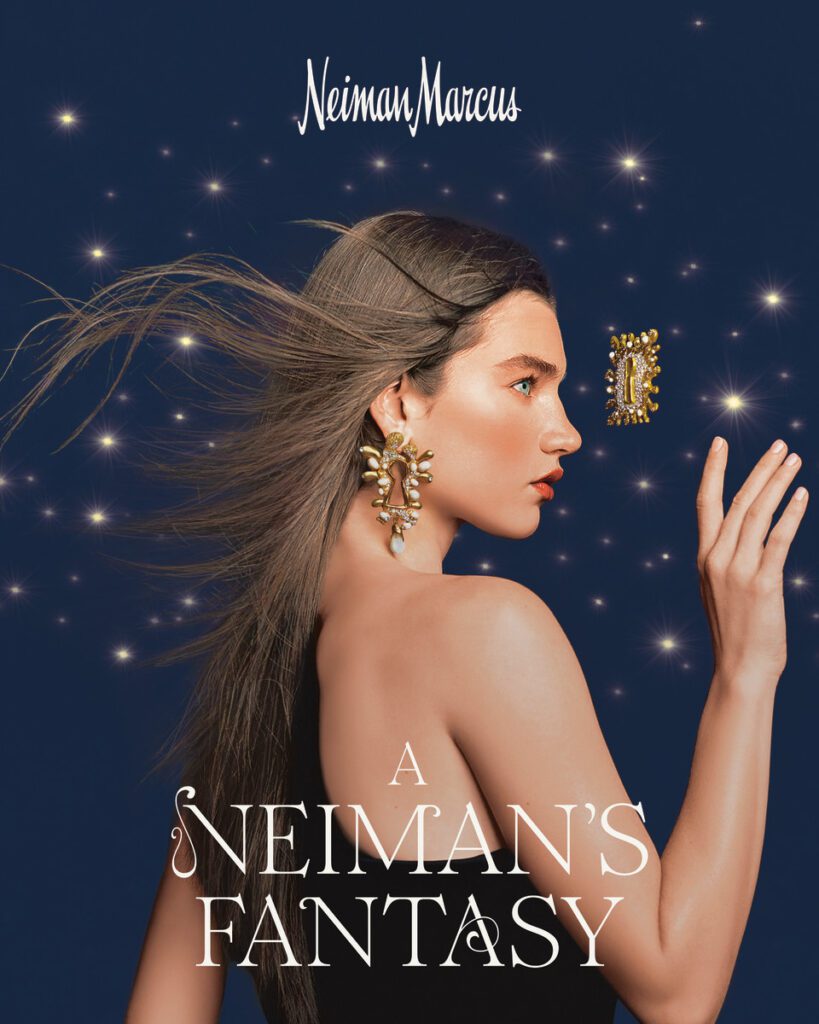

Each year, luxury retailer Neiman Marcus offers a collection of “Fantasy Gifts” as part of its Christmas Book catalog. These gifts are ultra-exclusive, one-of-a-kind experiences that cater to the brand’s affluent clientele.
Past Fantasy Gifts have included things like a custom-designed Infiniti Q60 car, a walk-on role in a Broadway show, and a private quarterback camp with Joe Montana. While these extravagant gifts are out of reach for most customers, they generate significant buzz and reinforce Neiman Marcus’s image as a purveyor of luxury and exclusivity.
Complementary accessories are items that supplement or enhance the use of a company’s primary product offerings. For example, a luggage company might offer a complimentary travel pillow or packing cubes when purchasing a suitcase.
This type of GWP works well for companies selling products that have natural companion items or accessories. By providing these complementary gifts, companies can enhance the perceived value of their primary offerings and encourage customers to use their products more frequently or effectively.
Pros:
Cons:
Case Study: Apple’s Complimentary AirPods Promotion
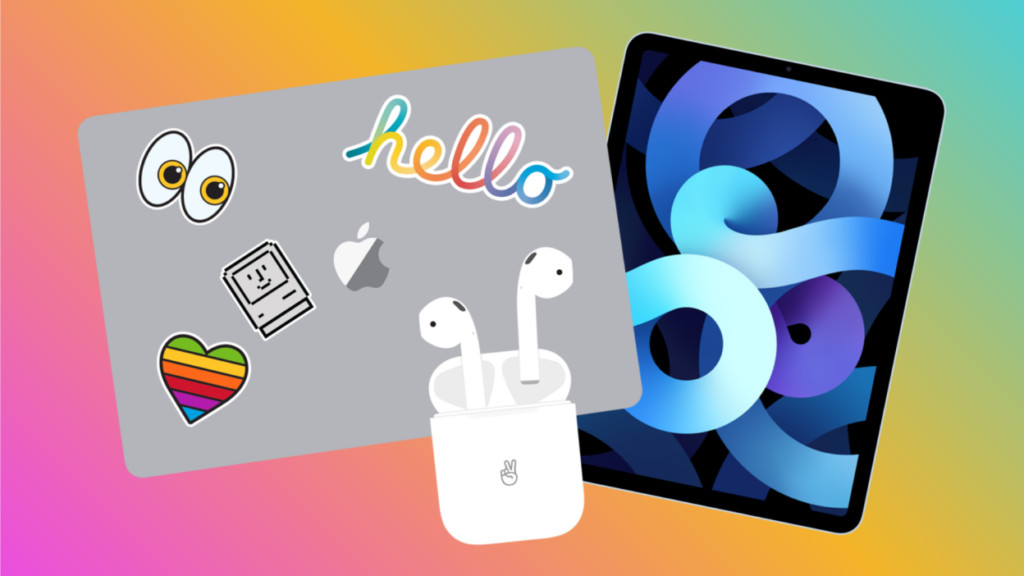

In a recent promotion, Apple offered a complimentary set of AirPods wireless earbuds with the purchase of select iPhone and iPad models for college students. This GWP not only provided a strong incentive for students to choose Apple products over competitors but also encouraged deeper engagement with the Apple ecosystem.
Partnered products involve collaborating with another brand to create a unique, co-branded gift item. These partnerships can take many forms, such as a beauty brand partnering with a fashion designer to create a limited-edition makeup bag or a food company collaborating with a celebrity chef on a custom recipe book.
Partnered products work well for brands looking to tap into new customer segments or to create a more premium, exclusive perception of their offerings. By aligning with a respected partner brand, companies can benefit from the partner’s brand equity and reach while also providing customers with a unique, highly desirable gift item.
Pros:
Cons:
Case Study: Wild and SimplyCook Collaboration
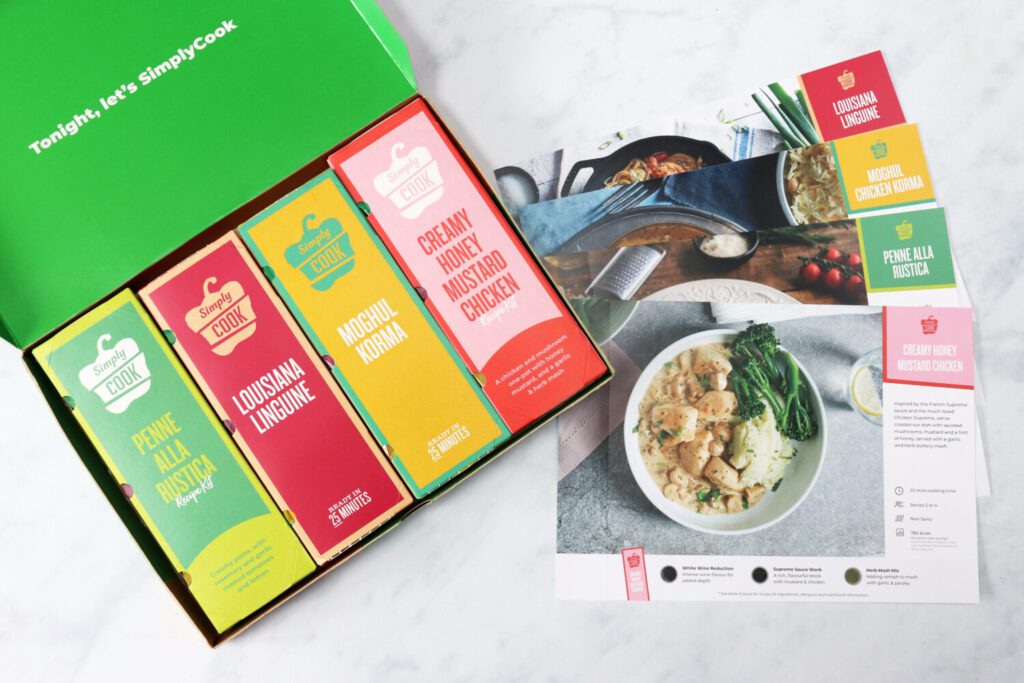

Wild, a sustainable deodorant brand, partnered with SimplyCook, a recipe box company, to implement a creative GWP strategy. Customers who purchased Wild deodorant products received a complimentary gift from SimplyCook, enhancing the perceived value of their purchase.
In today’s increasingly digital world, companies can also offer complimentary gifts in the form of digital products or services. These can include things like e-books, online courses, software trials, or subscription services.
Digital products work well for companies with a strong online presence or whose primary offerings are digital in nature. They can also be effective for brands looking to provide a high-value gift at a lower cost, as digital products typically have lower production and distribution costs than physical items.
Pros:
Cons:
Case Study: Mattel’s WWE 2K Digital Content GWP
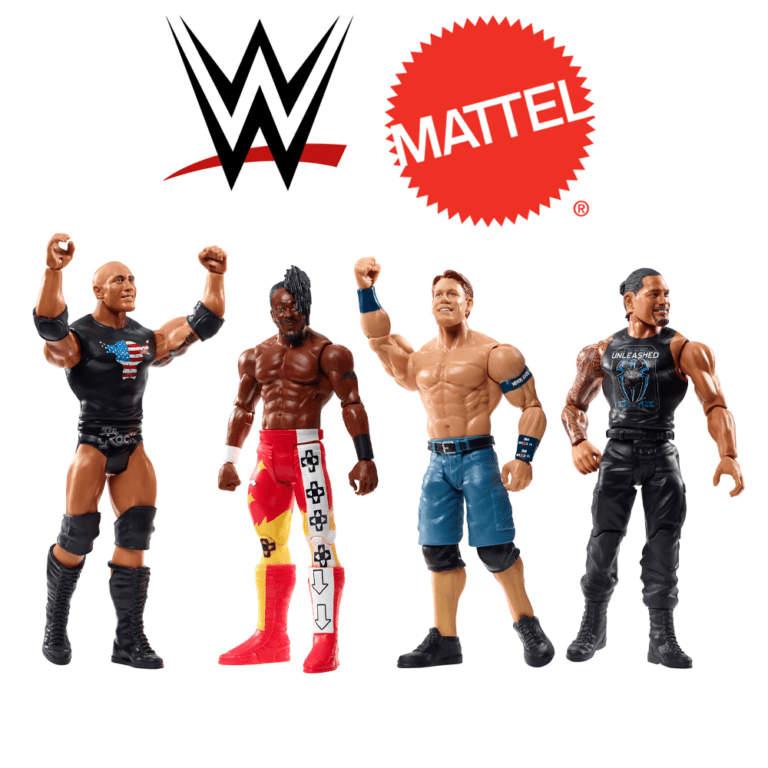

Mattel, the multinational toy manufacturing company, partnered with Snipp, a leading promotions management platform, to create an innovative GWP program for their WWE 2K video game franchise. The collaboration aimed to drive sales of John Cena toy products while enhancing engagement with the WWE 2K game.
Customers who purchased qualifying John Cena action figures or accessories at Walmart stores could upload their receipts to a dedicated microsite to receive exclusive in-game content for the WWE 2K game. This digital bonus content included special character skins, power-ups, and other game enhancements that added value to the physical toy purchase.
Personalized gifts are items that are customized with the recipient’s name, initials, or other personal details. This can include things like monogrammed luggage tags, engraved jewelry, or customized product bundles based on the customer’s stated preferences.
Personalized gifts work well for companies looking to create a stronger emotional connection with their customers and to provide a highly memorable, one-of-a-kind gifting experience. They can also be effective for brands in industries where personal expression and individuality are highly valued, such as fashion, beauty, and lifestyle products.
Pros:
Cons:
Case Study: Coca-Cola’s “Share a Coke” Campaign
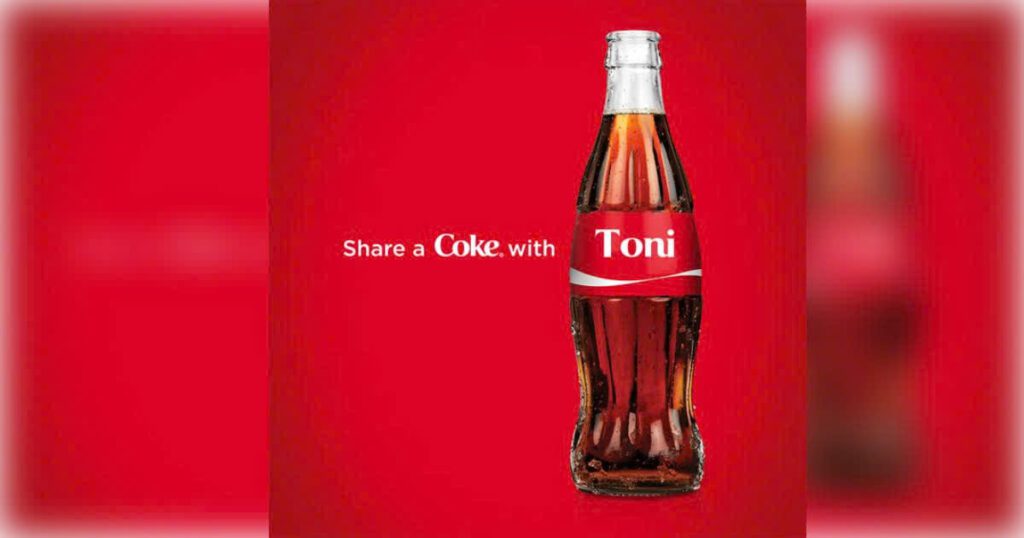

As mentioned in the Branded Merchandise section, Coca-Cola’s “Share a Coke” campaign is a highly successful example of personalization in action. By replacing its iconic logo with popular names and phrases, Coca-Cola created a highly personalized, engaging experience for customers.
The campaign not only encouraged customers to seek out bottles with their own names but also to purchase personalized bottles as gifts for others. This created a strong emotional connection between the brand and its customers, as the personalized bottles felt like a special, one-of-a-kind item created just for them.
When setting objectives for your GWP campaign, it’s essential to focus on criteria that align with your overall business goals and marketing strategy. The most common objectives include:
If your primary goal is to drive sales growth and encourage customers to spend more, set a minimum purchase threshold for qualifying for a gift that’s slightly higher than your typical average order value. This motivates customers to add extra items to their cart to reach the reward.
To attract first-time buyers, consider slightly lowering your minimum purchase requirement for new customers to reduce barriers to entry. You could also offer a special “welcome” gift for first purchases to sweeten the deal and encourage trial.
Also, you will need to promote your GWP offer through channels that effectively reach new audiences, like social media ads, influencer partnerships, or paid search placements.
Research from BIA – a company that specializes in providing data-centered analysis and consulting services – indicates that loyal customers spend 67% more than new customers.
If strengthening relationships with existing customers is your focus, tailor your GWP rewards to their demonstrated interests and preferences. Analyze past purchase data to identify popular product categories or specific items that loyal customers tend to buy repeatedly.
When introducing new items, your gift with purchase strategy can play a key role in generating trial and gauging customer reactions. To encourage people to take a chance on a new product, consider offering it as a free gift with the purchase of a relevant best-seller or product in the same category.
This allows customers to experience your new offering risk-free while still driving revenue from the associated purchase. Soliciting feedback on the gifted item via a post-purchase survey can provide invaluable insights to help refine your product development and marketing efforts.
Alternatively, you could offer a free gift or bonus reward to customers who purchase the new item at launch. This could be a complementary accessory, a discount on a future purchase, or even a special unboxing experience to create a memorable first interaction with your latest offering.
Remember, the key to a compelling GWP offer is a clear value exchange – the gift should feel genuinely desirable and worth the effort required to earn it.
To maximize participation without deterring potential customers, it’s essential to establish appropriate eligibility criteria for your gift with purchase. Two key factors to consider are minimum purchase thresholds and product-specific promotions.
Setting a minimum spending requirement for customers to qualify for the free gift is a common practice in gift with purchase promotions. The key is to find the sweet spot – high enough to encourage increased spending but not so high that it discourages participation.
Digital marketing expert Aaron Zakowski suggests setting your threshold at 30% higher than your average order value (AOV). For instance, if your AOV is $50, a $65 minimum purchase requirement can motivate customers to add more items to their cart to qualify for the gift.
Another effective approach is to tie the free gift to the purchase of specific products or categories. This strategy can help drive sales for targeted items, promote new launches, or move excess inventory. Here are a few tips for choosing products for your GWP campaign:
By carefully selecting the products eligible for your gift with purchase promotion and setting appropriate minimum purchase thresholds, you can create a targeted, effective campaign that drives your desired business outcomes.
To ensure your GWP campaign reaches the widest possible audience, promoting the offer through various channels is crucial. Let’s explore some effective marketing strategies and dive into the essential questions to ask when crafting your promotion campaigns.
Social media is a powerful tool for promoting your gift with purchase offers and engaging with your target audience. When building a social media campaign, consider the following questions:
Who is my target audience? Understanding your audience’s demographics, interests, and behaviors will help you tailor your content and choose the right platforms.
A recent study by Statista indicated that as of September 2023, 29 percent of Facebook users in the United States were aged 30 to 39 years, while a further 29 percent of users were aged 50 to 64 years, suggesting these age groups would be particularly receptive to products and services like financial planning tools, home improvement items, family-oriented entertainment subscriptions, health and wellness products, and professional development courses.
The image below showcases the full breakdown of age rank by Social Media:
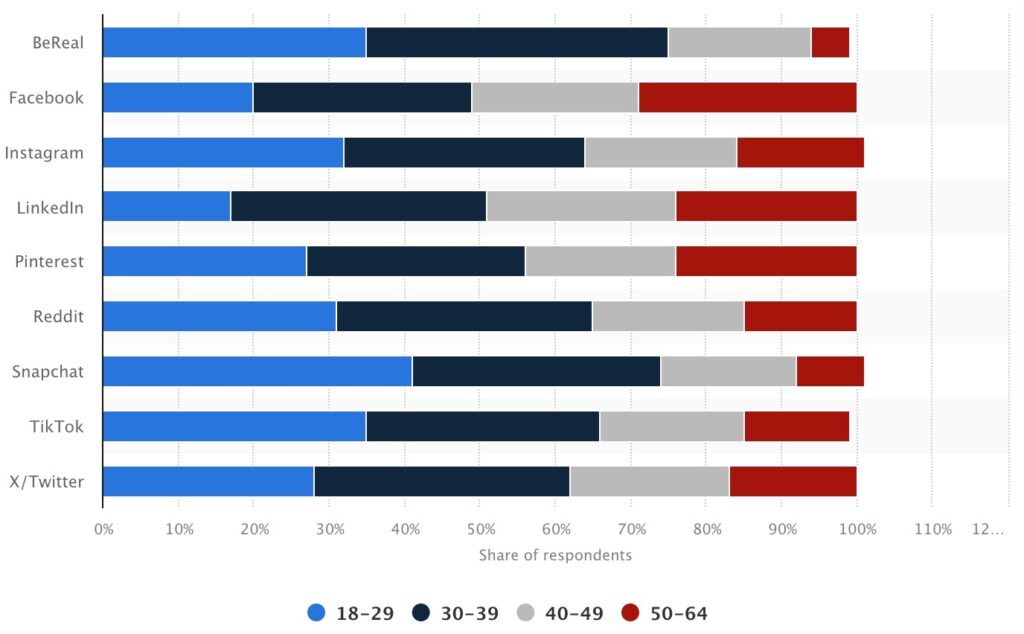

What are my business goals? Align your social media objectives with your overall gift with purchase campaign goals, whether it’s driving sales, increasing brand awareness, or fostering customer loyalty.
What type of content can I create? When creating content for social media, consider the unique strengths of each platform. Instagram and Pinterest are ideal for eye-catching visuals like professional product photos or lifestyle shots featuring your GWP. Video-centric platforms like YouTube or TikTok are perfect for engaging clips such as unboxing videos, product demos, or short ads, but keep in mind that video production often requires more time and effort compared to static images.
A recent research from Sproutsocial with over 729,000 public social profiles participating indicated that Short-form Videos and Images are the most captivating type of social media content:
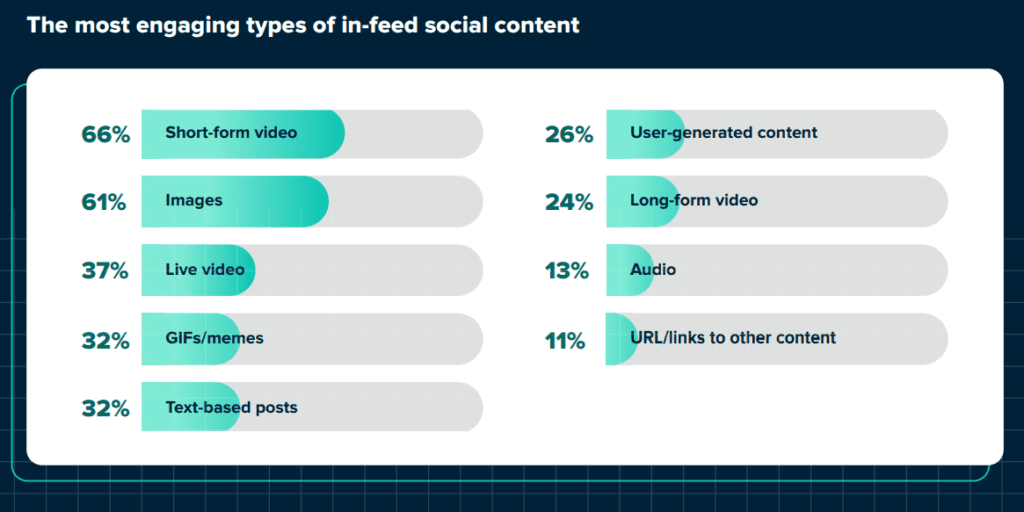

How competitive is my industry on these platforms? To gauge the competitiveness of your industry on a specific social media platform, start by searching for keywords related to your products or niche. Take note of how many competitors appear and analyze their content strategies, engagement levels, and follower counts. If you find a high volume of similar businesses actively promoting their offerings and interacting with a large audience, that’s a strong indication that the platform is quite competitive for your industry.
What is my budget for social media marketing? Determine how much you can allocate to social media advertising and content creation to maximize your campaign’s reach and impact.
How do I measure success on these platforms? Establish key performance indicators (KPIs) to track your campaign’s performance, such as engagement rates, click-through rates, or conversion rates.
Different social media platforms cater to varying business goals and audiences. For instance, Instagram and TikTok are great for visually showcasing products and building brand awareness, particularly among younger audiences. LinkedIn, on the other hand, is more suited for B2B marketing and professional networking.
Email marketing is another crucial channel for promoting your GWP campaign and targeting your message to the right audience. As reported by The Radicati Group, the number of email users worldwide is expected to grow from approximately 4.5 billion in 2024 to over 4.8 billion by 2027, underlining the continued relevance and potential of email as a marketing channel for reaching a wide audience with your gift with purchase offer.
When developing your email marketing strategy, a recent report from Klaviyo showcases that automated flows, such as abandoned cart emails or post-purchase follow-ups, generate up to 30 times more revenue per recipient than generic email blasts, as they are highly targeted and timely. This highlights the importance of leveraging automation.
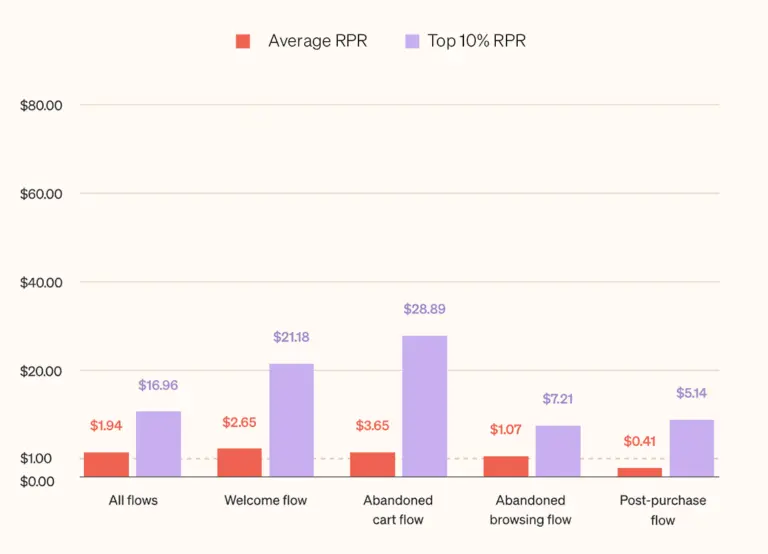

Basically, the red bars show average Revenue Per Recipent (RPR), and the purple bars show top 10% RPR for that flow. Essentially, it highlights how the best email senders (the top 10% performers) significantly out-earn the average sender for each flow type.
Partnering with influencers can help you reach new audiences, build trust, and drive engagement for your GWP campaign. A Pew Research Center survey found that 54% of 18-29-year-olds say influencers impact their purchasing decisions a lot or a little. This drops to 42% for users aged 30-49 and 29% for those 50 and older, indicating that influencer partnerships may be particularly effective for targeting younger demographics.
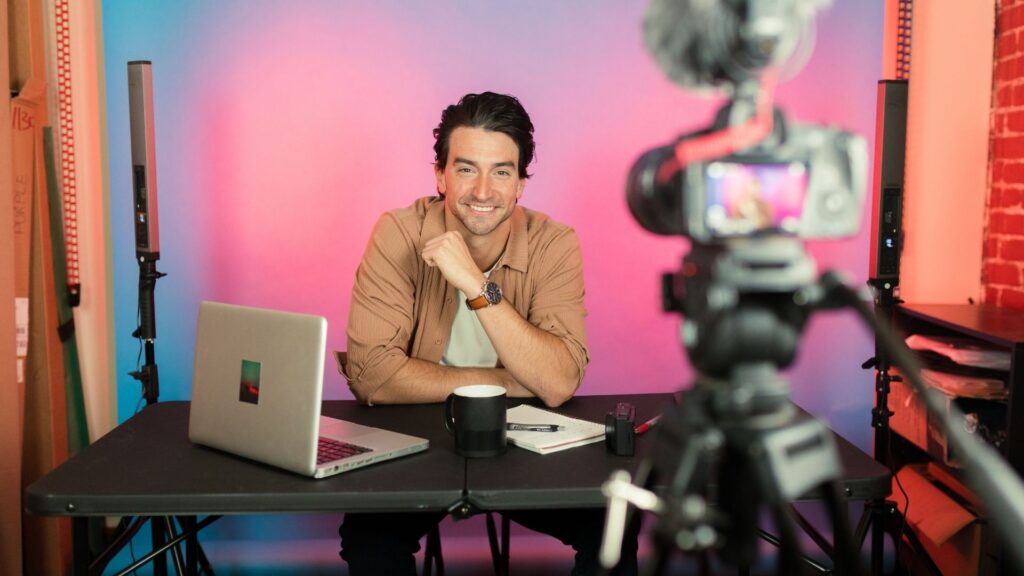

To effectively leverage influencer partnerships:
By strategically leveraging social media, email marketing, and influencer partnerships, you can maximize the visibility and impact of your GWP campaign, reaching your target audience with compelling content and driving meaningful business results. The key is understanding your audience, setting clear objectives, and choosing the channels that best align with your goals and resources. By staying data-driven and adaptive in your approach, you can continually refine your promotion strategies to achieve optimal outcomes for your GWP initiatives.
While gift with purchase promotions can be highly effective, there are several common mistakes businesses should watch out for. Let’s explore these pitfalls and how to avoid them to ensure your campaign’s success.
One major misstep is choosing gifts that customers perceive as cheap, low-quality, or unrelated to your brand. This can dampen interest in your promotion if people feel the gift isn’t worth the required purchase.
To avoid this, carefully select gifts that:
Thorough market research can help identify gifts your customers will appreciate. Make sure the gift’s value feels commensurate with the minimum purchase or other eligibility criteria.
Another frequent mistake is setting overly complex or restrictive rules for qualifying. If it’s too confusing or the minimum purchase is too high, shoppers may not bother participating.
The solution? Keep it simple! Clearly state the requirements, like minimum purchase amounts, and prominently display this info across your marketing. If you offer tiered rewards or multiple gift options, consider using visuals like infographics to help customers quickly grasp the different thresholds and gifts. The goal is an intuitive, seamless process for earning the gift.
Even an amazing gift with a purchase offer will underperform if it is not properly promoted. Skimping on a solid multi-channel marketing plan limits your reach and results in low participation.
To get your promotion in front of as many eyes as possible:
Failing to measure your promotion’s results is a missed opportunity to learn and improve for next time. Without knowing your key metrics and customer sentiment, you can’t intelligently refine your approach.
Overcome this by:
By proactively dodging these common pitfalls, you can set your GWP campaign up to delight customers and deliver the results you’re aiming for. Stay customer-focused, data-informed, and nimble, and you’ll be able to progressively optimize your GWP strategies for maximum impact.
To deepen your understanding of GWP strategies and address common questions, let’s explore some helpful supplementary content.
Expert Insight: Choose relevant, useful gifts that align with your brand identity, such as branded merchandise or complementary accessories.
Considerations: While attractive, free shipping may lack the tangible appeal and perceived value of a physical gift. Weigh your audience’s preferences and the relative costs.
Considerations: Assess how GWPs stack up against discounts, BOGO offers, or loyalty programs in terms of ROI, engagement, and brand alignment to determine the best approach.
Gift with purchase promotions can be remarkably effective for driving sales, fostering loyalty, and attracting new customers when executed thoughtfully. The key is to select the right gifts, set clear eligibility criteria, and promote the offer through targeted, multi-channel campaigns.
However, it’s crucial to navigate potential pitfalls, such as choosing low-value gifts or failing to measure success. By proactively addressing these risks and continuously refining your approach based on data-driven insights, you can optimize your GWP efforts and achieve the desired outcomes.
To maximize GWP success, maintain a customer-centric focus, stay attuned to your audience’s preferences, and adapt as needed. Choose gifts that are relevant and aligned with your brand, set attainable eligibility criteria, develop comprehensive promotional strategies, monitor performance metrics, and seek customer feedback to refine your approach.




Shopify cross-sell is a smart way to increase sales by showing customers related or add-on products. It helps shoppers...


The Shopify “You May Also Like” feature is a simple but effective way to suggest products your customers might be interested...
![17 Best Shopify Apps for Clothing Store [2025]](https://bogos.io/wp-content/uploads/2025/03/BEST-SHOPIFY-APPS-FOR-CLOTHING-STORES-2-400x225.jpg)
![17 Best Shopify Apps for Clothing Store [2025]](https://bogos.io/wp-content/uploads/2025/03/BEST-SHOPIFY-APPS-FOR-CLOTHING-STORES-2-400x225.jpg)
According to a report by Icra, fashion retailers may see revenue growth of up to 15% in FY25, driven...

